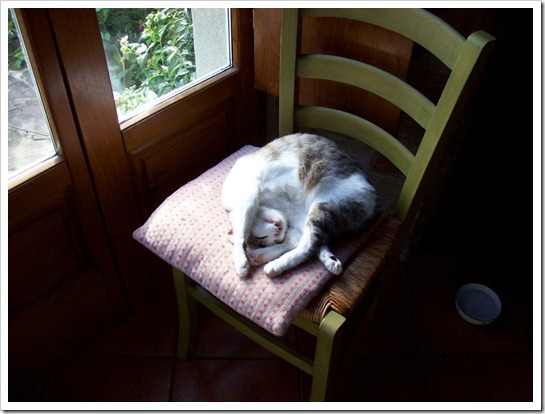Here’s another question which I eagerly started replying to in my recent post ‘July’s Grammar Clinic’ thinking ‘this should be simple to answer, just a couple of lines should do the trick’. Ultime parole famose, 230 words later I realised that I was only half way through, so it’s all grown up and now it’s become a blog on its own.
The question: come si usa la parola “proprio”? sembra che è usato in tanti diversi modi. Grazie, JB (how is the word ‘proprio’ used? it seems that it’s used in a variety of ways. Thank you, JB.)
Well ….. proprio has quite a variety of meanings, here is a list of its main functions in modern Italian:
1. used as an adverb, proprio means ‘really’ and it doesn’t change its ending, e.g. questo gelato è proprio buono = this ice cream is really good, questi gelati sono proprio buoni = these ice creams are really good, sono proprio dispiaciuta per Giorgio = I’m really sorry for Giorgio
 |
| Photo: “Fruit sorbetto at Gelato Naia, September 8, 2008” (CC) by Ragesoss |
2. another meaning of proprio used as an adverb is ‘just’ or ‘exactly’, e.g. siamo arrivati proprio ora = we arrived just now, questo è proprio quello che cercavo = this is exactly what I was looking for
3. used as an adjective, proprio can mean ‘typical’, ‘characteristic’, ‘specific’, and in this function it changes its ending according to the noun it refers to, e.g. è proprio di Giorgio comportarsi così = it’s typical of Giorgio to behave like this, questa medicina è propria per la febbre = this is a specific medicine for fever
4. proprio can be a possessive adjective. It is used mainly in the third person singular and third person plural instead of suo, sua, suoi, sue and loro (his, her, its, their), e.g. Mario ama il proprio lavoro instead of Mario ama il suo lavoro = Mario loves his own job, rimettete i libri al proprio posto instead of rimettete i libri al loro posto = put the books back in their own place
 |
| Photo: Casa dolce casa … Jenny sta meglio a casa propria! © Geoff Chamberlain 2014 |
5. a very important use of proprio is as a possessive adjective in the impersonal form, meaning ‘one’s own’, e.g. si sta meglio a casa propria = one feels better in one’s own house, fatto con le proprie mani = made with one’s own hands, gelati di produzione propria = homemade ice creams (literally: ice cream of one’s own production).
6. Finally, proprio is also used a noun, but is mostly limited to expressions such as lavorare in proprio = to work independently, vivere del proprio = to live on one’s own means.
Spero proprio di essere stata chiara!


Comments:
philippa davern:
Grazie Geoff. Come di solito il tuo post e’ stata molto disponibile!
Pietro Barbella:
In numero 3, doesn’t “typical” modify “it is” and doesn’t ”specific” modifi “is”. Wouldn’t that make these adverbs rather than adjectives?
Serena:
@Pietro Barbella Salve Pietro!
To answer your question may I simply refer you to the following links:
http://dizionari.corriere.it/dizionario_italiano/P/proprio.shtml
http://www.oxforddictionaries.com/definition/english/typical
http://www.oxforddictionaries.com/definition/english/specific
I believe they’ll answer your questions.
Saluti da Serena
serse:
molto grazie